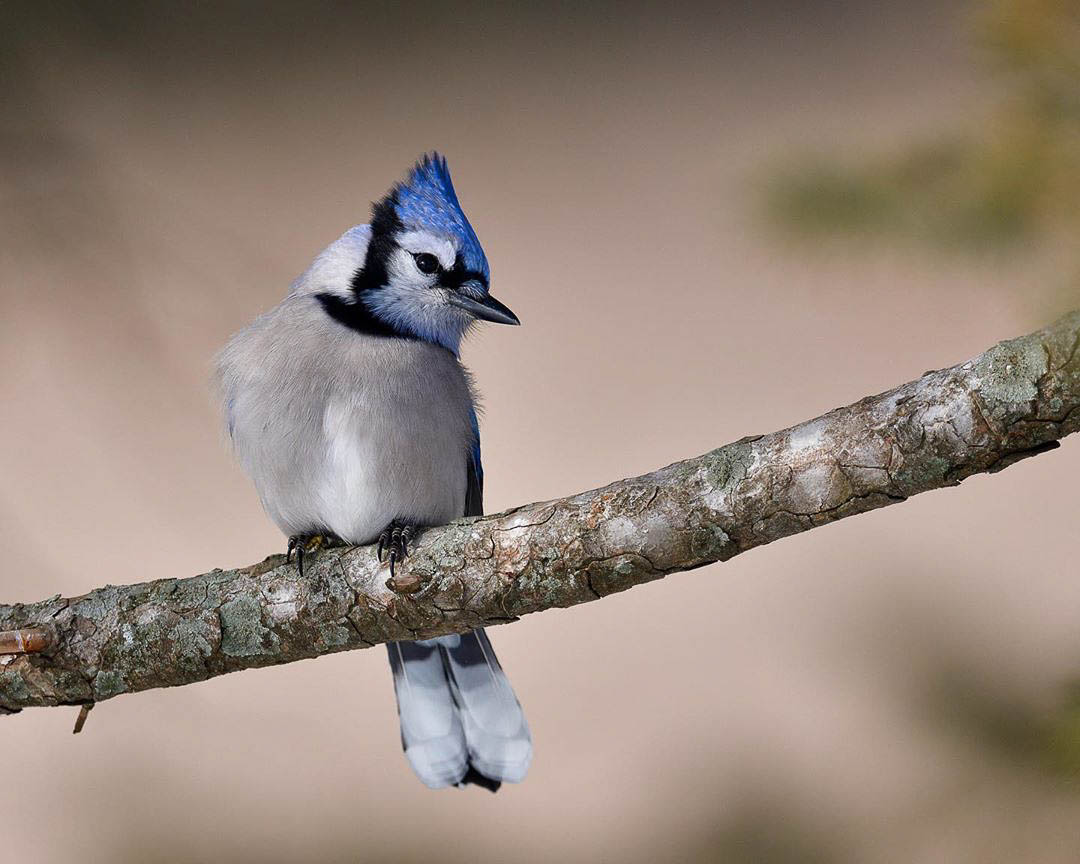
By Monica Macoubrie, Wildlife Education Specialist
They’re everywhere: In the streets, in the skies, in the parking lots and even on baseball fields — corvids. You’ll know them as crows, ravens, blue jays and black-billed magpies. Worldwide, over 130 species of birds belong in the Corvidae family.
Widely distributed, these birds thrive in diverse ecosystems, from dense forests to urban environments. They are typically medium to large and exhibit glossy black or iridescent plumage that reflects a mesmerizing sheen.
Renowned for their cognitive abilities, corvids exhibit problem-solving skills, tool usage and a remarkable capacity for learning, which sets them apart in the avian realm. They are some of the most adaptable and clever birds on the planet.
Intelligence Beyond Feathers
The birds in the Corvidae family are known for their exceptional intelligence.
Corvids have been observed using tools, a behavior once thought to be exclusive to humans and a selective group of primates.
Scientists have reported crows memorizing garbage pickup days and restaurant closing times. By memorizing these schedules, the birds worked out the most opportune times to forage and increase their efficiency for getting food.
Black magpies are one of the few avians that can recognize themselves in a mirror. In a study, researchers painted white dots on black magpies and then put these birds in front of a mirror. At first, some birds became aggressive toward the mirror, but after a short period of time, they started trying to clean off the dots. Once researchers took the mirror away, the preening stopped.
Researchers concluded that these birds had self-awareness and recognized themselves in the mirror, evidenced by their attempts to clean themselves when a mirror was available.
Other studies have demonstrated the birds’ problem-solving capabilities, as well high levels of cooperation within family groups.
Communication Mastery
Corvids communicate through a diverse range of vocalizations, another testament to their intelligence, with some even showing signs of vocal mimicry.
Blue jays may be some of the best mimics out there. Scientists have witnessed blue jays mimicking the calls of red-tailed hawks, cats and human voices, among others. Mimicking a raptor can scare away other birds, which would allow a blue jay to swoop down and eat by itself without competition. It’s why humans often associate corvids with being loud and aggressive, and sometimes even consider them to be bullies to birds such as nuthatches and chickadees.
In other ways, corvid language is a complex system of communication, enabling the birds to give warnings, offer camaraderie and even entertainment.
Cultural Significance and Folklore
Corvids also have left an indelible mark on mythology and folklore across cultures.
In Norse mythology, the raven holds a special place as the companion of Odin, the Allfather. Huginn (thought) and Muninn (memory), Odin’s two ravens, traverse the realms to bring back information and messages. Ravens, in this context, symbolize wisdom, knowledge and the mystical connection between the divine and mortal worlds.
Similarly, in Celtic mythology, crows and ravens are associated with the goddess Morrigan, a figure linked to war, fate and transformation. These birds are seen as omens, foretelling events and guiding warriors on the battlefield. The presence of crows in Celtic lore underscores their role as messengers between realms and keepers of esoteric knowledge.
In Native American cultures, various tribes attribute different meanings to corvids. For some, crows and ravens are trickster figures, embodying both intelligence and mischief. In other traditions, these birds are revered as creators, with their black plumage representing the primordial void from which all life emerges.
Today, the mystique of corvids continues to inspire tales that bridge the mundane and the magical, emphasizing the enduring fascination humans hold for these intelligent and enigmatic creatures.
The Corvidae family of birds transcends the ordinary, captivating scientists and storytellers alike. Whether soaring through mythological realms as messengers of gods or gracing the branches of trees as urban dwellers, corvids not only enriches our understanding of avian biology but also leave an indelible mark on human folklore and imagination. Between reality and myth, corvids persist as enigmatic ambassadors of the skies, inviting us to explore the depths of both the natural world and the human psyche.
